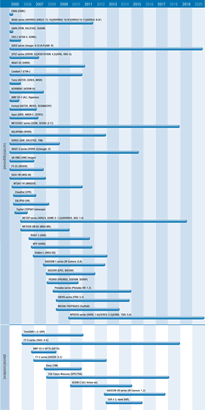Radiation budget
The Earth's radiation budget is the balance within the climate system between the energy that reaches the Earth from the sun and the energy that returns from Earth to space. Satellite measurements offer a unique means of assessing the Earth’s radiation budget. The goal of such measurements is to determine the amount of energy emitted and reflected by the Earth. This is necessary to understand the processes by which the atmosphere, land and oceans transfer energy to achieve global radiative equilibrium, which in turn is necessary to simulate and predict climate.
Systematic observations of the Earth system energy balance components are noted by the IPCC as being of key importance in narrowing the uncertainties associated with the climate system. In addition to these continuous global measurements of the radiation budget which are necessary both to estimate any long term climatic trends and shorter term variations overlying these trends, measurements on a regional scale are useful to understand better the dynamics of certain events or phenomena and to assess the effect of climate change, for example on agriculture and urban areas.
In general, three types of measurements are currently possible:
- the shortwave and longwave radiation budget at the top of the atmosphere;
- the shortwave radiation budget at the Earth's surface;
- the total incoming broadband radiation flux.
NASA has, since the mid sixties, been measuring the net radiation with the ERBE, ACRIM, and CERES sensors. The MISR spectroradiometer (also on Terra with CERES) provides data on top of the atmosphere, cloud and surface hemispheric albedos and aerosol opacity. Continuity of Total Solar Irradiance (TSI) measurements is now assured by the launch of the SORCE mission at the beginning of 2003, carrying 4 instruments (TIM, SOLSTICS, SIM, XPS) operating over the 1nm-2000nm waveband and measuring over 95% of spectral contribution to TSI.
NISTAR on the DSCOVR mission (from 2008) will measure reflected solar energy and radiant power emitted by the sunlit Earth in the UV, Visible, and IR bands from an orbit optimized to continuously achieve the critical viewing angle.
An increasing number of radiation budget measurements are featuring on operational meteorology missions, including: GERB (on METEOSAT-8 operating since September 2002 and measuring shortwave and longwave radiation every 15 minutes); TSIS and ERBS (on NPOESS); continued narrow-band information from the HIRS, AVHRR, and VIIRS instruments.

